In Schammes’s Footsteps - ShUM Residency
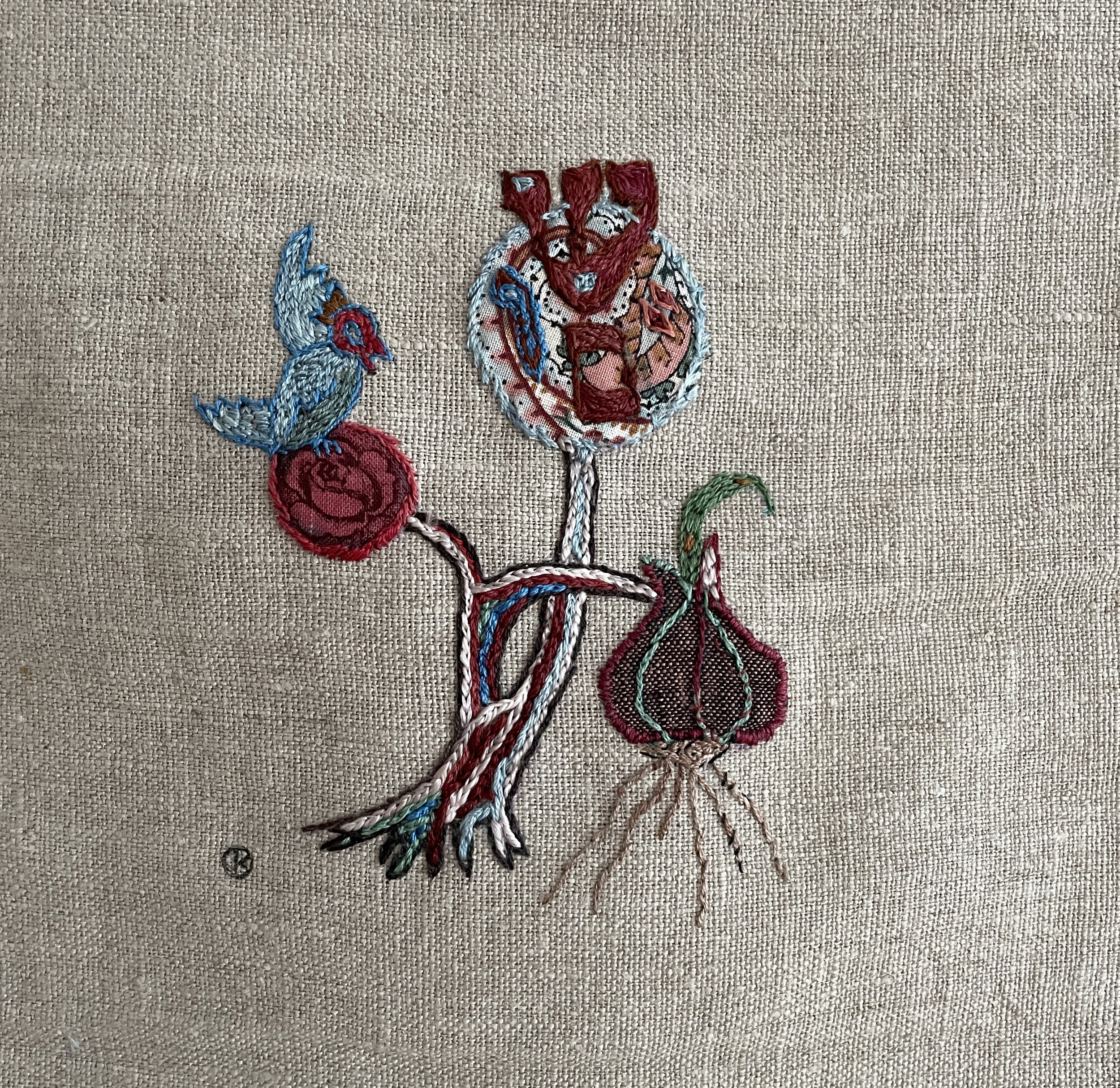
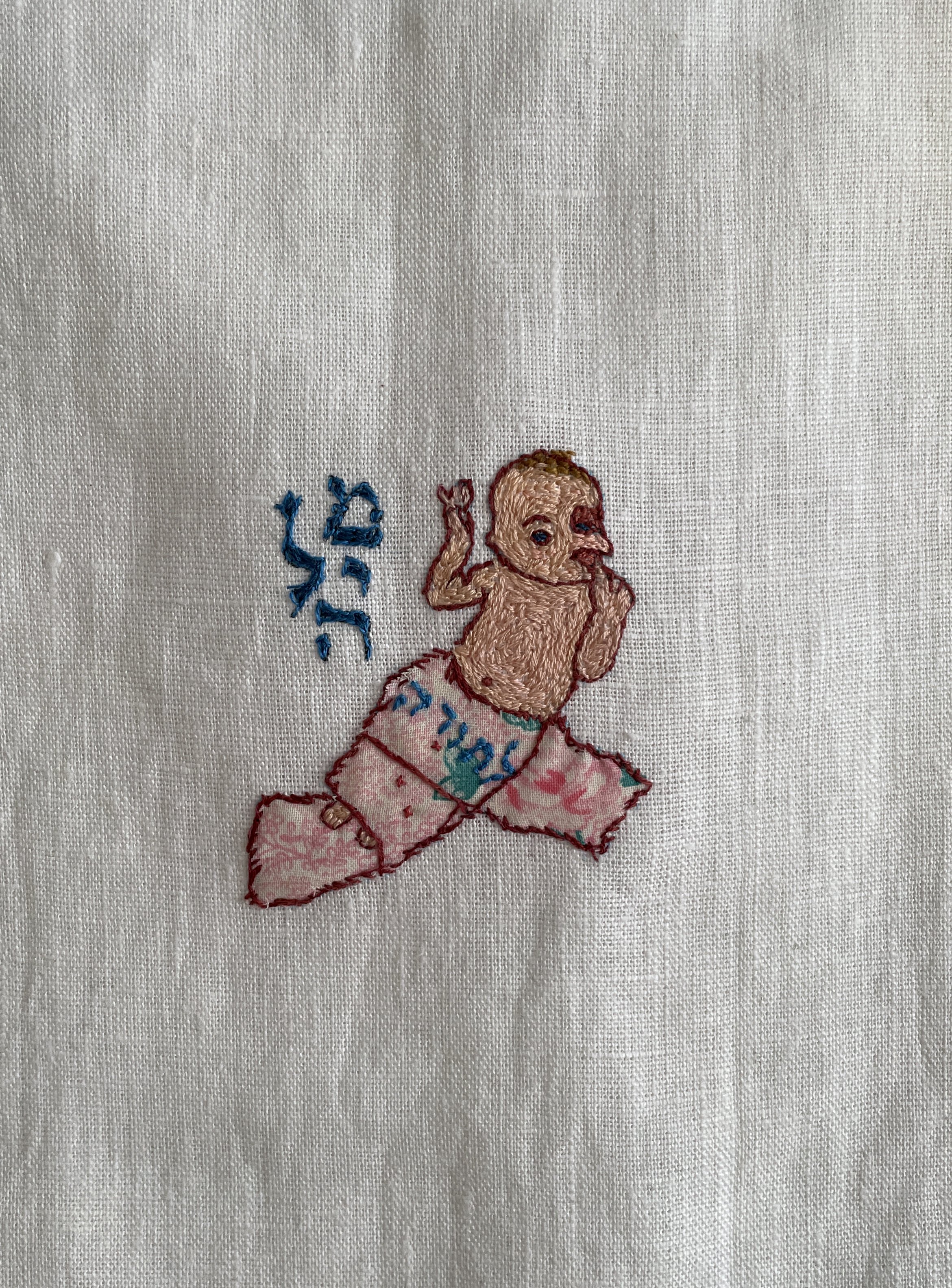
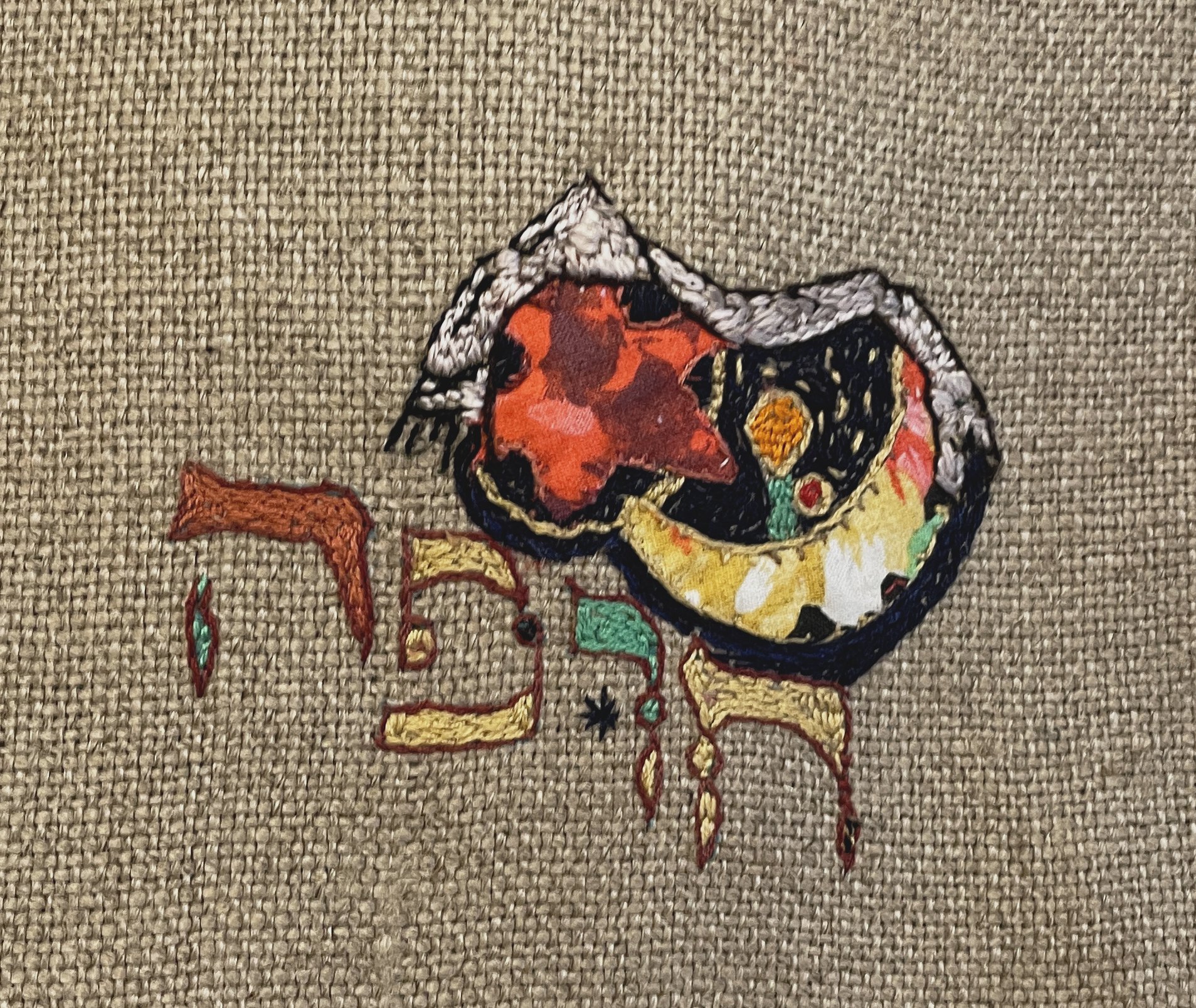
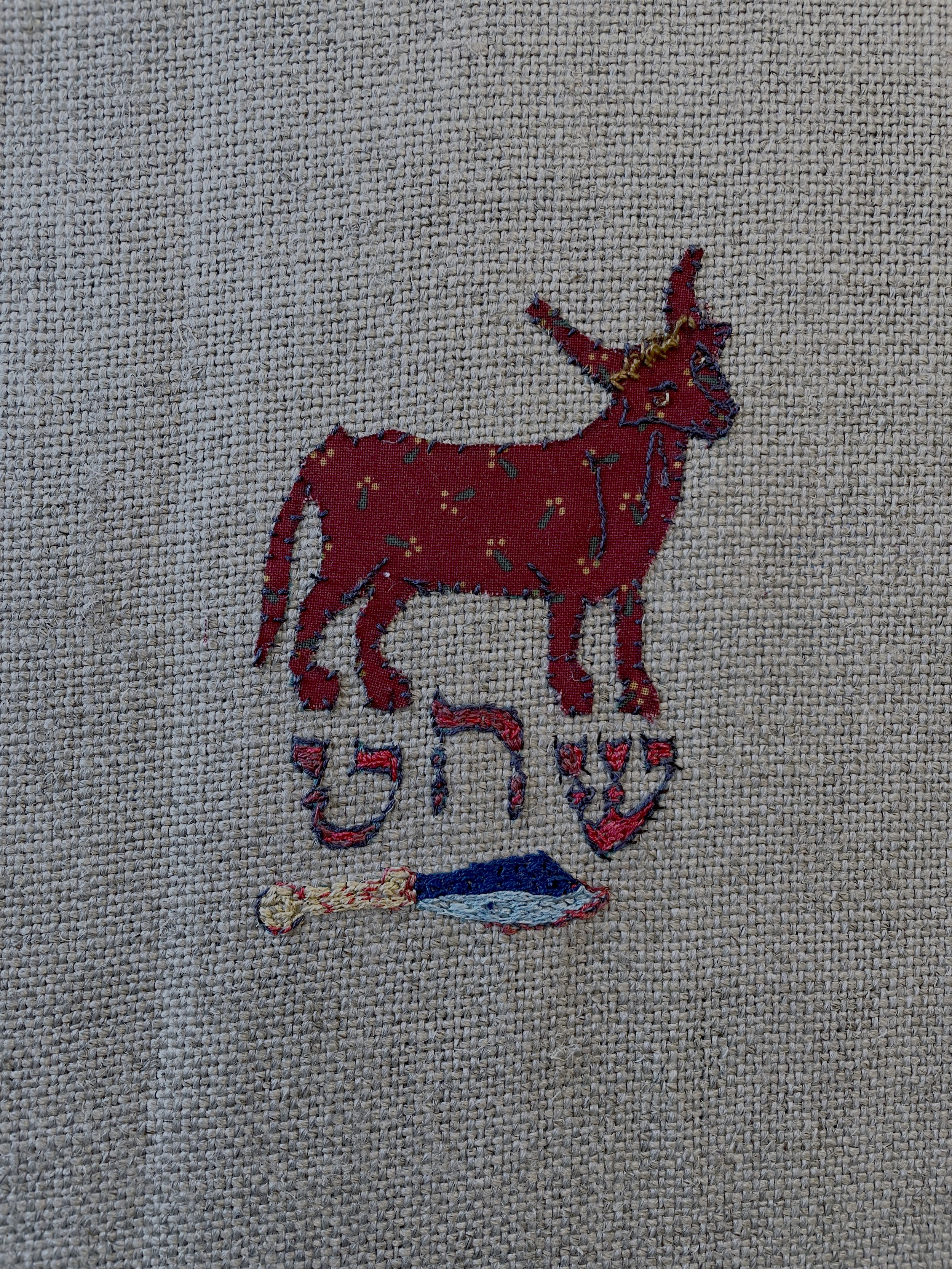
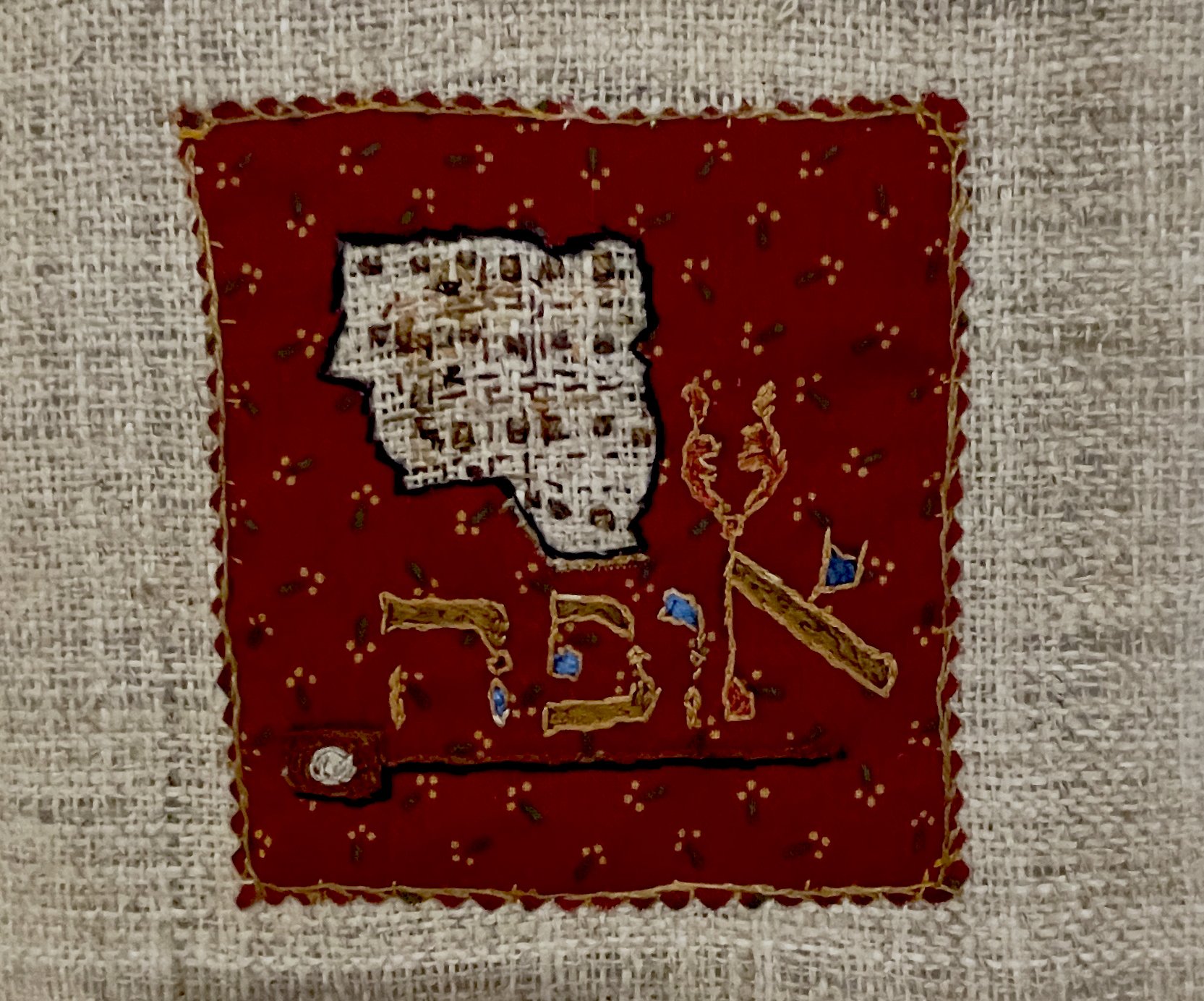
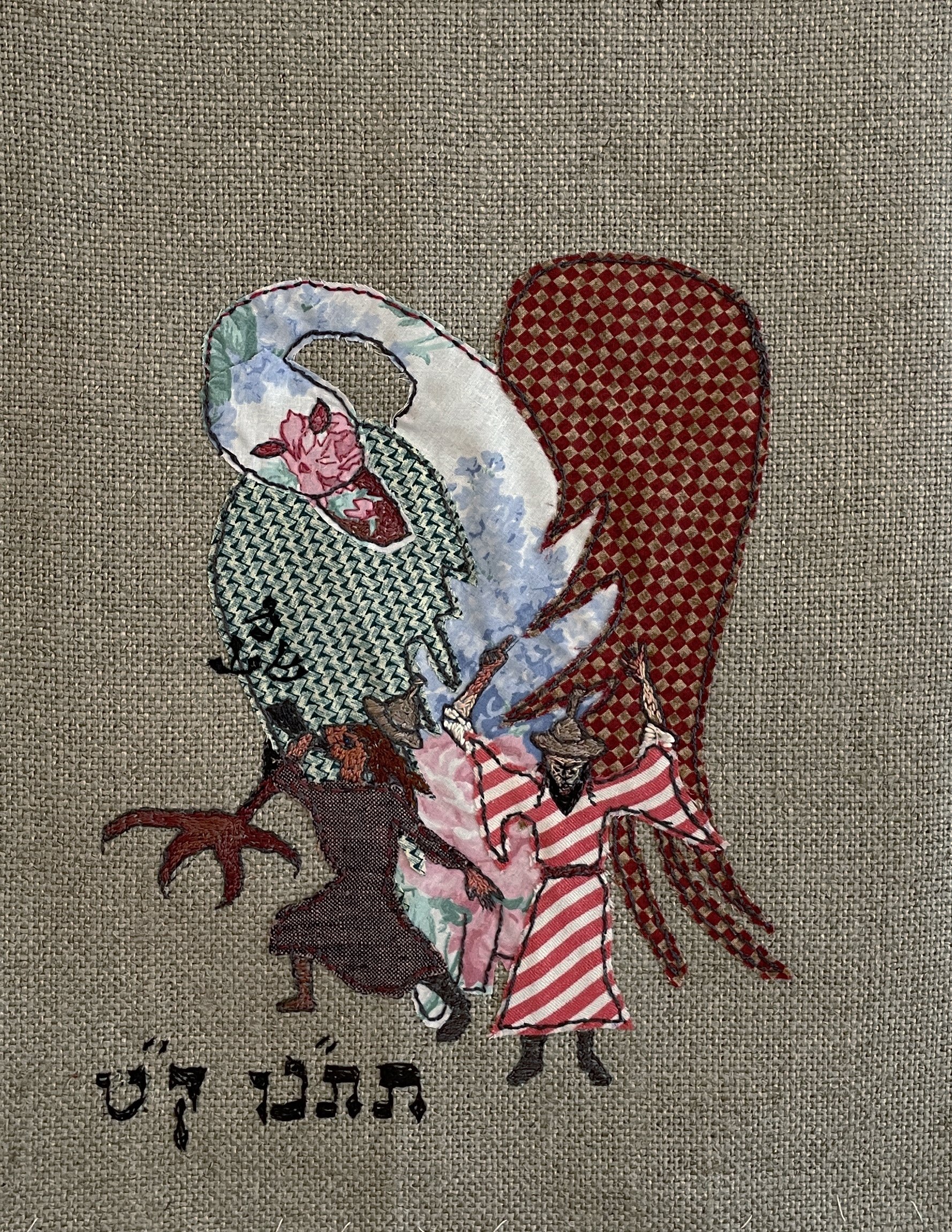
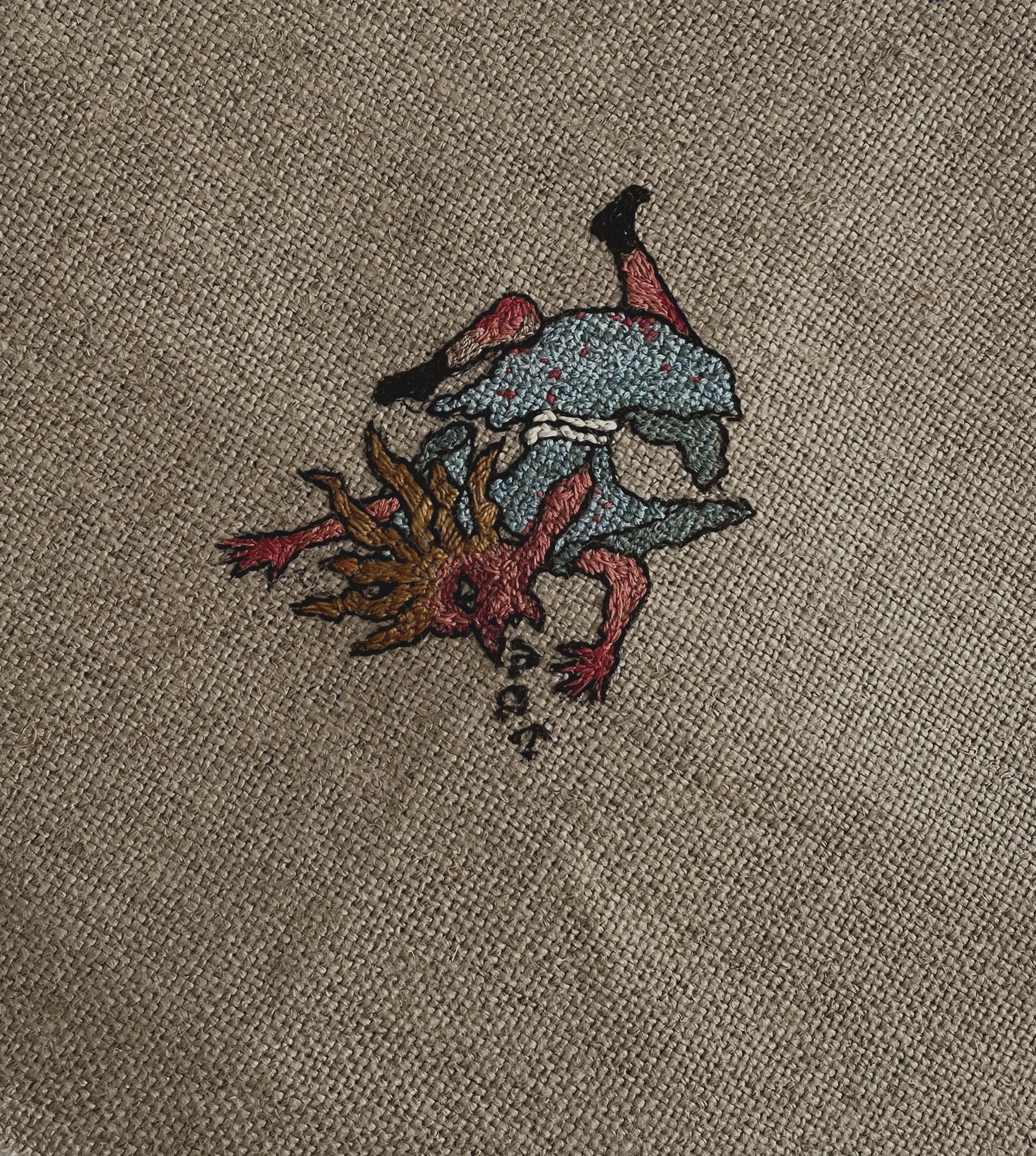
Art residency of the ShUM cities alliance, Rhineland-Palatinate, Germany.
In 2021, following the UNESCO recognition of their Jewish historical sites as world heritage, ShUM cities (Speyer, Worms, Mainz) alliance launched an international art residency focusing on the local Jewish heritage.
In my residency I focused on an extended reading of Juspa Schammes’s מנהגים דק״ק וורמיישא (Customs of the Holy Community of Worms, written in the 17th century) and mapping of the book on the contemporary city of Worms with embroidery and ritual.
During my 6 weeks in Worms, while reading the Customs I was searching for traces of places, ceremonies and people mentioned there. Some were physically present - the synagogue, the mikveh (ritual bath), the cemetery; some - bakery, slaughter house, private houses - were absent, but their location could be established or imagined. I celebrated each encounter of the 17th century text with the contemporary urban fabric of Worms by creating a miniature embroidery. The contents of palm size embroideries was based on the text and on the Worms Mahzor, a prayer book of the 13th century, which was in use during the 17th century. The mahzor allowed to study the stylization of letters and of the figurative representations. The human figures there are hybrids with bird-like features, a trait common to several Jewish medieval illuminated texts, pointing to the artists attempts to deal with the prohibition of graven images and also differentiating themselves from the Christian visual tradition. In my works I improvised with this approach, keeping to the hybrid visuality and making the figures more expressive. Each embroidery was dedicated to a single custom or story, forming a fragmented and disjointed vocabulary and lexicon, akin to the process of study or recollection of the past.
By the end of the residency the embroideries were presented as part of a performative walk through the Jewish quarter and outside of it, so creating a map of the absent/present city, of reading and imagining, of writing and embroidering―an unassuming, subtle and ephemeral memorial to the 17th century Jewish city of Warmaissa and its devoted chronicler. The presentation was performed as a series of small commemorative rituals open to the public when each location was accompanied by reading of a short fragment from the book. Just like the book, the entire walk represented the journey of a person from birth to death, from the synagogue to the cemetery with several stops along the way. The embroideries will be displayed at the Artist House in Worms during Fall 2022.
Embroideries, their stories and locations listed in the order of the walk:
1, שום
Shum (Hebrew for garlic) - blessing of smells, the house with garlic, gates of the Jewish quarter
Applique and hand embroidery with silk and cotton on linen, 10X10 cm
In the 17th century and before, the city houses were distinguished not by numbers, but by emblems - figures of animals, trade tools, plants etc…. So it was in the Jewish quarter. By the city gates, at the entrance to the Jewish quarter there once stood a small house, clinging. to the city wall. Its emblem was a head of garlic. We know of its location from a tax census taken by the city’s authorities in the 17th century. The smell of garlic was a common antisemitic trope in Europe, a derogatory designation. Yet in medieval alliance of the Jewish communities of Speyer, Worms and Mainz, known by its Hebrew abbreviation שו״ם, ShUM, garlic in Hebrew, there was nothing derogatory in the smell or the appearance of the humble and mighty plant. The three cities enjoyed a great renown in the medieval Jewish world as sources of rabbinical wisdom and significant financial amplitude. Worms was known across Ashkenaz as “the lesser Jerusalem”. Notwithstanding the calamitous history of crusades, pogroms and blood libels that the Jewish community of Worms endured since the end of the 11th century, this renown has not faded in the 17th.
Customs, chapter 314, Blessings, my translation (here and onwards):
One cannot enjoy a good smell unless a grace was said prior to smelling. After that no grace is needed again…If that which smells is from a tree, one blesses saying “the creator of. fragrant trees” grace. And if it was an herb one blesses by saying “the fragrant herbs” grace. And if it was neither from a tree, nor from an herb, one blesses by saying “the creator of various fragrances” grace.
Blessed be You, our Lord, king of the world, the creator of fragrant herbs.
2. מילה
Milah (circumcision) - story of a circumcision during plague, Synagogue Square.
Applique and hand embroidery with silk and cotton on linen, 9X9 cm
Customs, appendix 4 after chapter 245, customs of circumcision:
A Boy Brought From a Contaminated Home and Circumcised as Usual
And so the story goes. On Wednesday 4th to the month of Tamuz of the year 5426 (7 July 1666), mistress Taltza, the honorable wife of master Itzik Belin Shim, gave birth to a son. Itzik invited the Gaon and judge, our teacher Rabbi Shimshon, may the Merciful guard and redeem him, to be the Mohel (circumciser) and his own son, Avraham Shim to be the Sandek (godfather). And as the custom goes, by Sabbath night they went to pray Zekher, merry and happy. And on Sunday after, the house of the aforementioned Itzik was contaminated with plague. The widow Vagilen fell sick and Itzik’s daughter too, and they both passed away. Vagilen died and was buried on Monday, and his daughter on Tuesday. And Itzik’s house was closed and sealed for the danger of spreading the contamination. And Rabi Veyman changed his mind to be the Mohel and when other Mohalim saw him refrain from danger, they kept away and refused to circumcise the boy. And me, Yuspa Schammes, I told myself in my heart: “Haven’t the sages said that what is good cannot become evil, and this commandment [circumcision] is the preferable and the beloved among all others, it prevails over Sabbath, and the people of Israel took it upon themselves gladly, and it is the primary pious deed.” And so fully content in my heart I said: “I will be the Mohel.” And so it was. I circumcised the boy in the synagogue on the eighth day from his birth as the custom of the divine commandment.
And how was it done? On the day of the Milah early in the morning, the family took the boy from his mother naked as he was born, and women bathed him twice in a clean place, dressed him up properly and swaddled him in clean diapers. And the sandekit (godmother) brought the boy through the women’s synagogue as usual. And I circumcised him at the men’s synagogue as usual. And during prayer time the Arc was dressed with a Brit Milah curtain, And I sang “”and you made a covenant” with Brit Milah melody and some new songs as proper in every Brit. Only the festive meal was not as usual, because Itzhak, the father, was in mourning and the sandek was in mourning over his sister. And so not to give up on the appropriate blessings and prayers, a few relatives and the Mohel got together in the house of Gotlib, his son-in-law, ate and drank, and there they concluded the Milah blessing. And when evening came, after bathing the boy as appropriate, the women came back and returned the boy to his mother, whose soul cried bitterly for him, and whose breasts were full with milk and aching, causing her great distress. And so the woman fulfilled her wish and gave her the boy, may the Holy Name prolong his days and years, Amen and may he say to the angel: stay your hand and stop the plague on the people of Israel, Amen.
3. די״א כלה צו״ם בא״ד ויר״ן - חופה
Huppah and Die Kalle zum Bad fürhen (the bride walks to the bath) - female purity and wedding customs, Mikveh (ritual bath)
Applique and hand embroidery with silk and cotton on linen, 11X9 cm
Customs, chapter 298, Customs of purity:
And a woman cannot immerse during the day, only during the night… and even when a bride immerses before her wedding, the custom here in Warmaissa is to immerse in the night time.
Commentary: women have to be modest on the night of their immersion and hide themselves, not to appear in public, or in front of living creatures, so that other people will not feel their presence. And the one who doesn’t do that, it is said of her: “Cursed is the one who lays with a beast”.
Customs, chapter 230, wedding customs:
And close to the afternoon prayer, before the beadle calls the congregation to the synagogue, he calls up and down the street: “The bride walks to the bath!” And then the bride walks wearing Sabbath clothes and two women in festive clothes on her left and right, and after them virgins and women follow and musicians walk in front of her and all together they lead her to the bathhouse. And when done, the bride returns with the two women at her sides and all the women and the virgins and the musicians walk before her. And on her head is a scarf called dicke Schleier… And if it’s time the bride immerses on that night, not during the daytime.
4. שחט
Shahat (slaughtered) - custom of the butcher, a known location of the Jewish slaughter house
Applique and hand embroidery with silk and cotton on linen, 12X9 cm
Customs, chapter 278, custom of the butcher:
The Kahal [community council] appoints a butcher and an inspector in all matters of animal slaughter. He should inspect all animals, including geese and chickens that come to him. They shouldn’t allow any other butcher to slaughter even one animal from time to time, nor to check an animal, unless authorized by the head of Beit Ha-Din (religious court of law) or at least if given permission by the permanent butcher. … And the permanent butcher gets a salary set by the leaders of the council. And from the animal he gets the throat and the lungs with fat clinging to it.
5. אופה
Ofeh (baker) - custom of baking Matzah, a known location of the Jewish bakery
Applique and hand embroidery with silk and cotton on hemp, 10X10 cm
Customs, chapter 75, custom of baking Matzah:
You bake Matzot [Passover bread] in the house of the Shammash [beadle] and the compensation for baking them is not included in his annual wages that is called Schalet Gelt [Schalet money - wages for the Sabbath food]. He is given payment for every Matzah [that he bakes] when it is allotted by the community, may they be guarded and enlivened.
Gabbay Tzdakah [man responsible for charity and upkeep of public places] bakes first for the poor to distribute the Matzot among them, and then all of the community comes to bake without any particular order, the first one who comes benefits. And the custom is for the Rabbi to come over once or twice a day to check the kneading and baking if they are made properly. He protests if the dough pieces are too big and [sees] that the dough is constantly prepared, and all the Matzah is made as prescribed. And if someone objects to him, he declares that dough Hametz [bread - cannot be consumed during Passover] and burns it. And the rest of the baking customs are as in other communities.
Gabbay Tzdaka is to distribute flour for Matzah to the houses of the poor and to provide them with meat on holidays. Customs for holiday eve you will find above in chapter 55.
6. תתנ״ו-ק״ט
1096-1349 - stories of persecutions and the magic goose, St Martin’s church
Applique and hand embroidery with silk and cotton on linen, 24X19 cm
The stories referenced in this and the next work come from another book by Juspa Schammes, Maase Nisim, the Book of Miracles, a compilation of legends and Jewish folklore. Both stories are reflections of the calamitous medieval times in the history of the Jewish community of Worms - the first crusade of 1096 and the pogrom of 1349 when the Jews were accused of poisoning the sources of water and bringing the plague to the city. In both instances the community nearly perished in the violence perpetrated by the citizens of Worms and its surroundings, with many Jews taking their own lives at the sight of the coming pogrom. Here I bring a short recounting of both:
During the time of the first crusade, when the violence against the Jews erupted in the city, the 12 Parnasim (community leaders) fled to the palace of the bishop. The mob attacked the palace and broke in. Among them was a priest with a magic goose. The goose felt if there were any Jews close by and alerted everyone to that with its cackle. With the help of the magic goose the Jews in hiding were discovered. Faced with murderous mob they ran along the city wall and jumped off to their death. The ground opened up and took them in.
When the Jews were accused of poisoning the wells and causing the plague, violence erupted in the city. The community gathered in the synagogue. Among them was a Jew well acquainted with the Christian ways. He dressed up as a Christian and went to St Martins church to preach peace to the congregation. When the priest with the magic goose came into the church, the goose began to cackle. The Jewish man said to the crowd: “Why do you believe the foolish bird? Don’t you see that there are no Jews here?” The people agreed and listened to the man and stopped the violence. The goose, upset, flew to the rooftop of the church, settled down and became an eagle. And there he sits till this very day.
7. נפילה
Nefilah (falling) - the custom of 23rd Yyar, fast of the 4856 (1096) calamity, Jewish cemetery
Hand embroidery with silk and cotton on linen, 10X11 cm
Customs, chapter 98, the custom of the 23rd Yyar:
We fast on the 23rd of Yyar the fast of the year 4856 calamity. On the 22nd of Yyar, prior to afternoon prayer', we change the Mappah and the Arc curtain and all the covers in the synagogue … and leave them until even the first day of the month of Sivan. … And all that we used to sing in the synagogue, the verses of song and prayer, we now shorten and sing in a voice lower than usual. We do not sing the Tish’a be-Av (9th day of month Av, the day of destruction of the Temple) melodies, we just sing less loudly. We say Selichot (penitence) prayers on the 23rd, day of the fast. … And we say psalms [starting with] “Remember us” etc.. until “Shall my prayer come before you”. And we say “Please look” (a devotional prayer) including the lines beginning with “revenge us”. And we repeat “Please bring before you” etc as usual. And we say Tachanun (supplicatory prayer) starting with “Because the poor are plundered” and then “The Guardian of Israel”. And we read [Book of Exodus 32:11] “And Moshe besought his Lord” and we mention the souls of the holy ones murdered here in the holy community of Warmaissa in the same day of the Tatnu (4856) Calamity and then we sing “The Father of Mercy”. Once we leave the synagogue we proceed to the cemetery and circle it and when we arrive at the graves of the holy we say Techinot (devotional prayers) as is appropriate.
8. תחינה עבור חברה קדישא דקברנים
Prayer for the burial society of undertakers - Jewish cemetery
Customs, appendix 3
Juspa Schammes wrote this penitence prayer for the Jewish burial society of Worms. I bring here a few fragments that to me seemed a good conclusion to the walk and the project.
Please, merciful and gracious G-d, answerer of prayers, hear ours… And from you, dwellers of dust, dwelling here in graves, peaceful in your beds, we ask forgiveness for everything we’ve done with you that was against your honor, if by all of us or by some of us, everything that was done in deed or in speech or in thought, knowingly or not, openly or secretly, by mistake or by intention, forced or willingly, this year or all years that passed, for all of it forgive us…. For sometimes we sinned walking our way on the graves of the pious man and women and graves of the holy men in this land … and maybe only some of us or none of us are worthy of approaching this holy place … as long as we do not step on your stones and your graves … For everything that was done to you by our hand that was against your honor, here we came today to circle your graves and pray for you to rest peacefully in your beds… and be remembered by G-d for good … may your soul be bonded in the bundle of life …
And now with permission from the Blessed Holy One and from yourselves we will leave you and may all of us and all of Israel remain in this world for the length of good days. Amen.